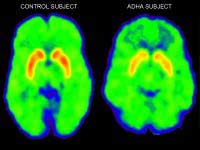Inside the ADHD Brain

An important part of helping people with ADHD manage their symptoms is to learn what is happening inside the brain. While most research does focus on treatment, more attention is now being given to the causes of ADHD and how the ADHD brain differs from the brain of a healthy person.
How the ADHD Brain Works
Two new studies offer clues as they give us a glimpse of the ADHD brain and how it works. Researchers hope this new insight helps us offer more targeted treatments to ADHD sufferers. Some of the questions researchers have are:- What is different in the ADHD brain?
- What happens in the brain when symptoms occur?
- Can we change brain irregularities?
Brain Connections in ADHD
In children who have ADHD, researchers have found that two key brain areas do not seem to connect. This occurs when children are given a task to measure attention. When the researchers looked at brain activity via electrical rhythms in ADHD children, they noted that there wasn’t a connection between the part of the brain used for attention and the visual processing areas.Healthy Children Vs. ADHD Children
To do the experiment, scientists gave children a test where they were shown a red or blue image and heard a high or low noise. Children had to react by pushing a button. Right before administering the test, the children were shown one of two things. They were either shown a letter ‘V’ to signify that the test would have a picture or an inverted ‘V’ to represent the letter ‘A’ – meaning they would hear a sound instead.In a healthy person without ADHD, after seeing the ‘V’ or ‘A’ the frontal cortex would send signals to other areas of the brain such as visual processing. This gets the person ready to start paying attention on something and focusing. When the electrical rhythm is measured at this time, it should show a drop in alpha wave activity. As expected, when researchers used healthy control volunteers, this is what they showed.
In children with ADHD, however, there was no drop in this activity. This suggests that there is some kind of ‘break’ in the connection between the part of the brain that represents attention and the visual processing parts.
Changing ADHD Diagnosis
Researchers think this means that children with ADHD have brains that work differently when getting them ready to receive stimuli, such as the noise or image in this experiment. The experiment could eventually change things for diagnosing ADHD as current diagnosis is based on behaviours rather than electrical patterns. It could also mean more specific ADHD treatments can be developed.Motivation for Tasks
In another study of ADHD children, researchers used an MRI to scan the brains of healthy children and those who have ADHD. They found that in ADHD children, the ventral striatum was smaller, especially on the right side.In this part of the brain, a person’s motivation is managed when they begin a new task. It is also maintained until that task is finished. It is thought that this difference represents the signs of ADHD such as being impulsive or hyperactive.
Delving Into the ADHD Brain
We still have much to learn about how the ADHD brain works. Although our main focus has been on treatment and diagnosis through behaviours, we are finally giving more attention to the inner workings of the brain. Now that we have found some key differences, we can hopefully use our understanding to improve the diagnosis and management of ADHD.- Misdiagnosis Controversy of ADHD
- Cigarette Smoke and ADHD
- Western Diet and ADHD
- Pre-Natal Links to ADHD
- Tobacco and Lead Exposure in ADHD
- Can Pesticides Increase ADHD Risk?
- How Sleep Influences ADHD
- Is ADHD a Genuine Condition?
- Evidence Review: ADHD & Scientific Research
- ADHD and Over-eating
- ADHD and Asthma
- ADHD Hyperactivity or Food Allergy?
- ADHD and Dyslexia
- Is ADHD Hereditary?
- ADHD and Aspergers Syndrome
- Possible Causes of ADHD
- The Difference Between Bad Behaviour and ADHD
- Tests for ADHD
- ADHD Signs & Traits
- ADHD: Symptoms and Diagnosis
- What is ADHD?


Re: Inside the ADHD Brain
This was really helpful! Recommend reading.
Re: Distinguishing Between ADHD and the Bright Child
A person with ADHD can show hyper focus on something that interests them, when they are in their "flow",…
Re: Conquering ADHD
I was told by my daughter Peditrishion that I could get help with my 9 year old daughter's behaviour she was referring me to somboadys else on…
Re: Why Do Some Teenagers With ADHD Self Harm?
I was born with ADHD and Iam now 17 year old adolescent.I suffer still with that problem and I am vulnerable to…
Re: Is ADHD Hereditary?
Dear coach4learn: The views you seem to be projecting are a blatant disregard towards the obvious truth regarding attention…
Re: ADHD in Adults
Stumbled upon this. Not really computer literate. You are describing me. What I hate most is my wife continually shouting at me that I "just don't…
Re: ADHD and Dyslexia
Jackie - Your Question:My son has is 8 years old now and can hardly read. He does not read. It seems as if he is struggling to get the alphabet…
Re: ADHD and Dyslexia
My son has is 8 years old now and can hardly read. He does not read. It seems as if he is struggling to get the alphabet in "his head". His…
Re: ADHD in Adults
My son has had problems since he was born but never diagnosed he has been in lots of trouble with the authorities and broken relationships. He self…
Re: The Difference Between Bad Behaviour and ADHD
i have 13yr old son, he has been diagnosed adhd since age 7yr. old until now we keep on visiting his doctor.…